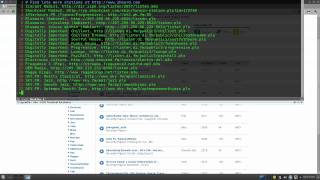Monday, 15 December, 2025г.
















Где искать: по сайтам Запорожской области, статьи, видео ролики
пример: покупка автомобиля в Запорожье
mkfs - Format USB Stick / Hard Drive - Linux CLI
commands used:
to find out your device location/letter:
sudo fdisk -l
example: /dev/sdX
to format to fat filesystem:
sudo mkfs.fat -n "Gotbletu" -I /dev/sdX
note: -I = that is a capital i not l
for ext2:
sudo mkfs.ext2 -L "Gotbletu" /dev/sdX
--------------------
NAME
mkfs - build a Linux filesystem
DESCRIPTION
mkfs is used to build a Linux filesystem on a device, usually a hard disk partition. The device argument is either the device name (e.g. /dev/hda1,
/dev/sdb2), or a regular file that shall contain the filesystem. The size argument is the number of blocks to be used for the filesystem.
The exit code returned by mkfs is 0 on success and 1 on failure.
In actuality, mkfs is simply a front-end for the various filesystem builders (mkfs.fstype) available under Linux. The filesystem-specific builder is
searched for in a number of directories, like perhaps /sbin, /sbin/fs, /sbin/fs.d, /etc/fs, /etc (the precise list is defined at compile time but at least
contains /sbin and /sbin/fs), and finally in the directories listed in the PATH environment variable. Please see the filesystem-specific builder manual
pages for further details.
Теги:
ubuntu debian arch linux mint computer tips tricks tutorial review open source operating system software free applications programs howto guide gotbletu distro distributions desktop news help gui mkfs build filesystem create format fat vfat msdos ext2 ext3 ext4 ntfs usb stick hard drive wipe command line bash zsh zshell shell script cli terminal ncurses curses tui console text user interface based cygwin scripting framebuffer
Похожие видео
Мой аккаунт


 У вашего броузера проблема в совместимости с HTML5
У вашего броузера проблема в совместимости с HTML5


